Aluminum
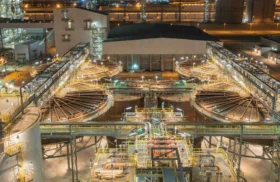
July 3, 2025
Maaden Completes Acquisition of Aluminum and Bauxite Subsidiaries Through $150 Million Share-Cash Deal
Saudi Arabian Mining Company, the Kingdom’s largest diversified mining enterprise and a subsidiary of the Public Investment Fund, has completed the acquisition of minority stakes in two aluminum-related subsidiaries through a combination of share issuance and cash payments totaling $150 million. The transaction provides Maaden with full ownership of Maaden Bauxite and Alumina Company and...
READ MORE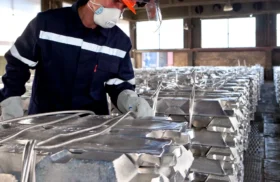
June 27, 2025
Russian Aluminum Giant Rusal Invests $316 Million in Chinese Alumina Producer Following Supply Disruptions
BY Lara Browne
Rusal, Russia’s largest aluminum producer and the world’s biggest primary aluminum manufacturer outside China, has completed strategic investments in Chinese and Indian alumina facilities to replace supply disruptions from Australia and Ukraine totaling approximately 2.8 million tonnes annually. The company acquired a 30% stake in Hebei Wenfeng New Materials for $316 million and agreed to...
READ MORE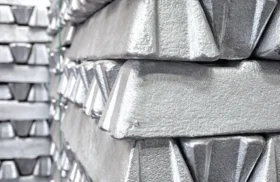
June 26, 2025
Global Aluminum Production Reaches 6.25 Million Tonnes in May as China Drives 3.3% Monthly Growth
BY Lara Browne
The International Aluminium Institute, a global trade body representing the world’s primary aluminum producers, reported that worldwide primary aluminum production increased 3.3% month-over-month to 6.25 million tonnes in May 2025, while annual growth reached 1.5% compared to 6.15 million tonnes in May 2024. China maintained its dominant position with 3.74 million tonnes of production, representing...
READ MORE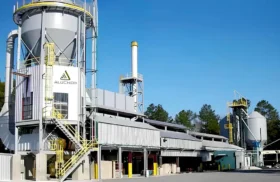
June 25, 2025
Hindalco Targets North American Specialty Materials Market with $125 Million AluChem Acquisition
BY John Davis
Hindalco Industries, India’s largest aluminium producer and metals flagship of the Aditya Birla Group, has acquired AluChem Companies, a US specialty alumina manufacturer operating since 1978, for $125 million as part of a broader strategy to capture growing demand from electric vehicle and semiconductor industries. The transaction provides the Indian metals giant with 60,000 tonnes...
READ MORE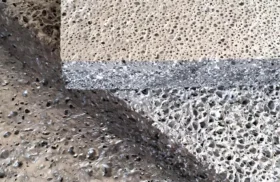
June 25, 2025
Canadian Aluminum Foam Producer Vertically Integrates Raw Material Supply with Rio Tinto Deal
Cymat Technologies, a Canadian manufacturer of stabilized aluminum foam founded in 2006, and Rio Tinto Alcan, a major global aluminum producer and the sole major supplier of proprietary metal matrix composites, have entered into a letter of intent for the acquisition of MMC technology and customer relationships. The transaction positions Cymat to capture $7.5-10 million...
READ MORE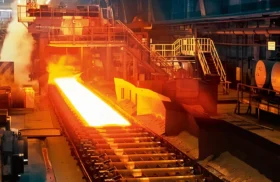
June 24, 2025
Kazakhstan’s Industrial Policy Drives Surge in Domestic Metals Processing
BY John Davis
The government of Kazakhstan is implementing measures under its 2021 Law “On Industrial Policy” to boost domestic manufacturing by supplying local enterprises with raw materials at subsidized prices. This initiative has led to a significant increase in the processing of base metals, including a twofold rise in primary aluminum processing to 57,000 tonnes in 2024,...
READ MORE
June 23, 2025
Canada to Adjust U.S. Steel and Aluminum Tariffs by July 21 Amid High-Stakes Trade Negotiations
BY Lara Browne
The Canadian federal government announced on Thursday that it will adjust its retaliatory tariffs on U.S. steel and aluminum products starting July 21, 2025, a move directly tied to the progress of intense trade negotiations with the Trump administration. The adjustment is part of a multi-pronged strategy to protect Canadian industries from what Ottawa has...
READ MORE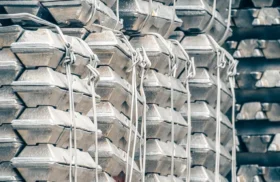
June 20, 2025
Dwindling LME Stocks and Russian Sanctions Fuel Aluminum Market Turbulence
Inventories of aluminum in London Metal Exchange (LME) warehouses have fallen to their lowest levels since 2022, creating significant underlying volatility in the market despite a seemingly stable headline price. Stocks have decreased from over 1.3 million metric tonnes two years ago to approximately 345,000 tonnes as of mid-June 2025. This tightening of available supply,...
READ MORE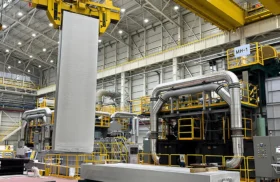
June 19, 2025
South Korean Aluminum Flat Product Sales Increase in May, But US Tariffs Impact Exports Unevenly
BY Lara Browne
South Korea’s three primary aluminum flat product manufacturers—Novelis Korea, Choil Aluminum, and Daeho Al—collectively reported an increase in sales and domestic shipments in May 2025. Total sales for the month reached 78,898 metric tonnes, a 3.1% gain from 76,508 tonnes a year prior. Domestic shipments rose by 6.7% to 25,600 tonnes. However, the impact of...
READ MORE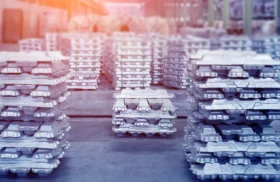
June 18, 2025
China’s Aluminium Imports Jump 14.7% in May, Bauxite Shipments Surge Over 29% as Supply Chain Realignment Continues
BY John Davis
China, the world’s largest consumer and producer of aluminium, imported 350,000 metric tonnes of unwrought aluminium and aluminium products in May 2025, marking a 14.7% increase year-on-year, according to data from the General Administration of Customs. The surge comes amid shifting global trade flows, robust domestic demand, and a strategic focus on raw material security....
READ MORE